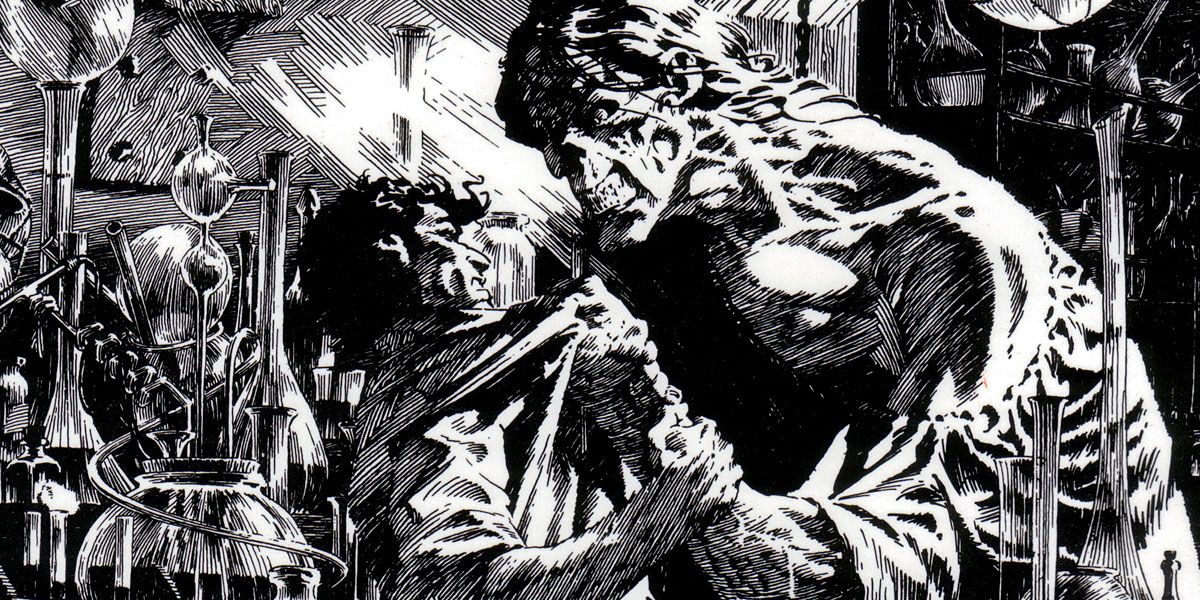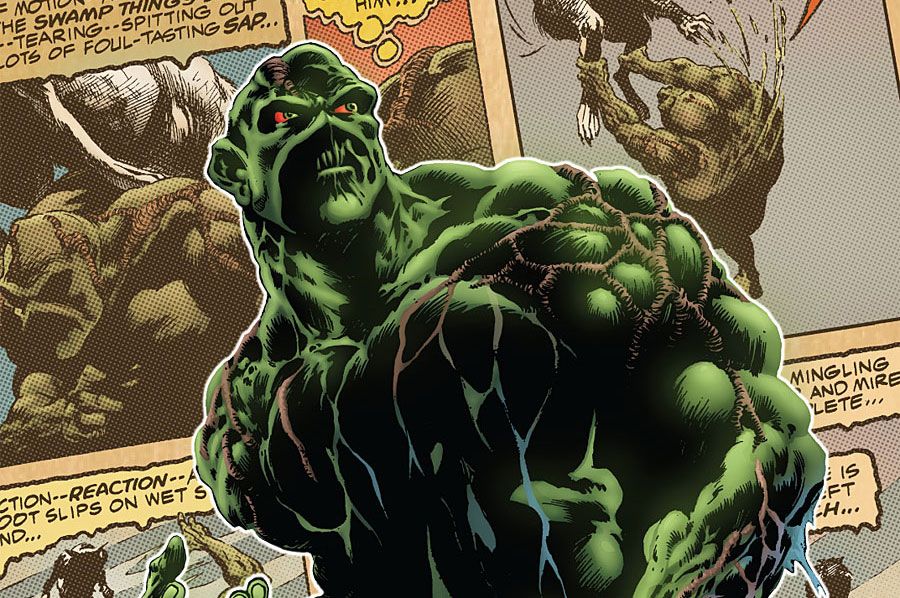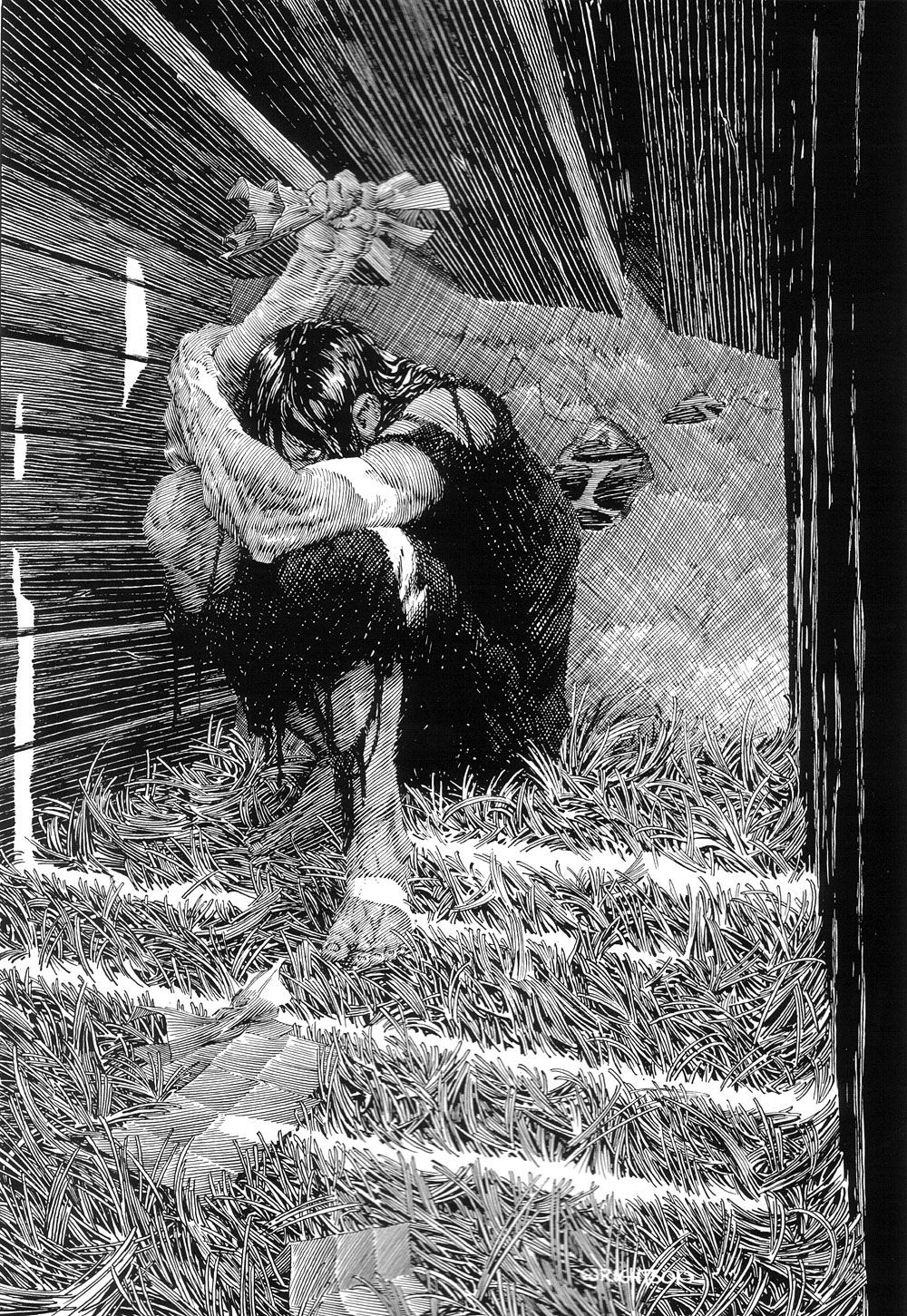I only met Bernie Wrightson a few times.
The first was at a signing he did with Steve Niles for “City of Others,” the 2007 Dark Horse miniseries which was the first collaboration between the two. By that point in his career, Wrightson had nothing to prove to anyone. He had collaborated with Steven King on various illustration projects and book covers including “Creepshow” and “Cycle of the Werewolf.” He had been a member of The Studio with Jeffrey Catherine Jones, Michael William Kaluta and Barry Windsor-Smith. In film, he worked as a designer on a long list of projects, including “Ghostbusters,” “The Mist,” “Land of the Dead,” “Galaxy Quest” and “The Faculty.”
In comics, though, Bernie Wrightson was more than just a great talent; he was a legend. He and Len Wein created Swamp Thing, the first ten issues he also illustrated, and which remain striking, beautiful and haunting to this day. His Alex Holland managed to be intricate and beautiful and horrific all at once. Like so many of his designs, Swamp Thing is familiar, which makes him only more unsettling because he’s so clearly not human. The way that Wrightson worked, designing creatures who were human and yet not, making it hard to embrace them but impossible to reject them, was deeply unsettling and part of his genius.
Of course, it was usually the monster, the freak, the outcast, the outsider, that Wrightson often wanted us to emphasize with.
The book of Wrightson’s that I remember best – and have read most of them – is “Mary Shelley’s Frankenstein.” The book presents the complete text of Shelley’s novel with illustrations created by Wrightson between other projects that he labored over it for years. I remember that, because I would sit with that book and stare at those drawings, amazed by not just their level of detail, but the skill that required to create them. I think of sitting with that book as part of my education in art, dissecting and trying to understand what he did and how he did it, and understanding that it might take me years to fully comprehend it – just as it took Wrightson years to create it.
RELATED: Legendary Horror Artist Bernie Wrightson Passes Away
Though Wrightson did so many things in comics, he probably remains best loved for his work at Warren Publishing on “Creepy” and “Eerie” and his work on DC Comics' mystery/horror titles. He was a contributor to “Heavy Metal,” and his character Captain Sternn was the subject of a miniseries Wrightson wrote and drew, and earned a segment in the “Heavy Metal” movie. He collaborated with Jim Starlin on a number of projects, including “The Weird,” “Punisher: P.O.V.” and “Batman: The Cult,” which remains one of the darkest, most disturbing Batman comics ever created. The two also produced the one shot comics “Heroes for Hope” and “Heroes Against Hunger,” anthologies designed to raise money for East African famine relief, and for which the two received the Bob Clampett Humanitarian Award in 1986.
So when Wrightson returned to comics in 2007 after a long period in which he was mostly working on other projects, he had nothing left to prove. He was in his fifties, and maybe not the best known artist at the time, but he had the respect of everyone. More than respect, really -- I want to say "awe," but that’s not quite right. Wrightson was too ordinary, too nice, too approachable. I never had the chance to be in awe of him, because on that first meeting, he was there to meet fans and talk and so when I asked him if I could interview him for CBR, he said simply, sure -- let me give you my phone number.
I remember vividly a few things that he said during our conversation, in particular the story of how he, Wein and editor Joe Orlando would work on "Swamp Thing." I think the interview is worth reading just for that. What I remember best, though, and what I thought of when I heard that he died over the weekend, was how nice he was.
Following our interview, we had the chance to meet a couple more times. He made a number of other comics in the years that followed with Steve Niles including “Dead She Said,” “The Ghoul,” “Doc Macabre” and “Frankenstein Alive, Alive!” I didn’t love them all, but the option of not getting a copy, of not reading them, just never occurred to me. In each book, the pages were colored directly from his pencils, which gave the work a different feel than I was used to from Wrightson. I know I wasn’t alone in studying those pages to see what he was doing and how he was able to do it.
Wrightson was beloved by other creators, because he was just that good. To understand why one simply has to look at his portfolio. His drawings are beautiful and atmospheric, compositions that manage to be both complex and simple to read. Over the years, he spoke about being influenced by Frank Frazetta and Graham Ingels and others who were associated with EC Comics. Wrightson would cross paths with many of these artists during his time at Warren, where many of them drew for “Creepy” and “Eerie,” just as Wrightson did. It’s easy to see other cartoonists in Wrightson’s work, as well. Looking at his inks, I keep thinking of Alex Raymond, who like Wrightson was a master at using a brush and used to make the unreal and the impossible feel all too real.
Looking at Wrightson’s pages I see the classical 19th and 20th Century illustrators like Franklin Booth and Joseph Clement Coll and Edwin Austin Abbey, I see the influence of woodcut engravings by people like Lynd Ward and Otto Nückel. Yet Wrightson’s work never comes off as dated, it never feels like lost work recovered from another era. It feels like something that is contemporary, and at the same time, it looks timeless. To read Bernie Wrightson’s work is to take in the history of comics, because that's what he was drawing from, and yet, like the best artists, the work that he created was something unique and personal.
A man of his talents could have done almost anything, but he chose to make comics. He chose to tell horror stories. He found a way to bring to life the tales that haunted his imagination. He helped shape our nightmares, gave form to the shapeless horrors outside our windows at night and hidden in our closets. But instead of making us run away from them, he made us run toward them, or at least, refuse to run away. For him, if we saw a monstrous reflection of ourselves staring into the abyss, it was a lesson in who we really were.
When I interviewed Wrightson, I asked what scared him. He replied “Everything scares me.” And then he laughed. Because he was being honest. Everything really did scare him, he said, from our then-President to drive-by shootings to the dark, and yet he couldn’t help but laugh.
Wrightson died over the weekend, after a long battle with brain cancer. He was sixty-eight years old. He is survived by his wife, his two sons and his stepson. They have our condolences. The only comfort I can offer is that he will be remembered and talked about for a very long time, because so many of us liked and respected him. And because people will wonder, long after we’re gone, just how he was able to draw like he did.



